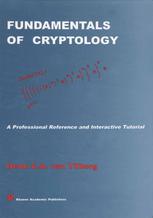

Most ebook files are in PDF format, so you can easily read them using various software such as Foxit Reader or directly on the Google Chrome browser.
Some ebook files are released by publishers in other formats such as .awz, .mobi, .epub, .fb2, etc. You may need to install specific software to read these formats on mobile/PC, such as Calibre.
Please read the tutorial at this link: https://ebookbell.com/faq
We offer FREE conversion to the popular formats you request; however, this may take some time. Therefore, right after payment, please email us, and we will try to provide the service as quickly as possible.
For some exceptional file formats or broken links (if any), please refrain from opening any disputes. Instead, email us first, and we will try to assist within a maximum of 6 hours.
EbookBell Team

4.8
104 reviewsThe protection of sensitive information against unauthorized access or fraudulent changes has been of prime concern throughout the centuries. Modern communication techniques, using computers connected through networks, make all data even more vulnerable for these threats. Also, new issues have come up that were not relevant before, e. g. how to add a (digital) signature to an electronic document in such a way that the signer can not deny later on that the document was signed by him/her. Cryptology addresses the above issues. It is at the foundation of all information security. The techniques employed to this end have become increasingly mathematical of nature. This book serves as an introduction to modern cryptographic methods. After a brief survey of classical cryptosystems, it concentrates on three main areas. First of all, stream ciphers and block ciphers are discussed. These systems have extremely fast implementations, but sender and receiver have to share a secret key. Public key cryptosystems (the second main area) make it possible to protect data without a prearranged key. Their security is based on intractable mathematical problems, like the factorization of large numbers. The remaining chapters cover a variety of topics, such as zero-knowledge proofs, secret sharing schemes and authentication codes. Two appendices explain all mathematical prerequisites in great detail. One is on elementary number theory (Euclid's Algorithm, the Chinese Remainder Theorem, quadratic residues, inversion formulas, and continued fractions). The other appendix gives a thorough introduction to finite fields and their algebraic structure.